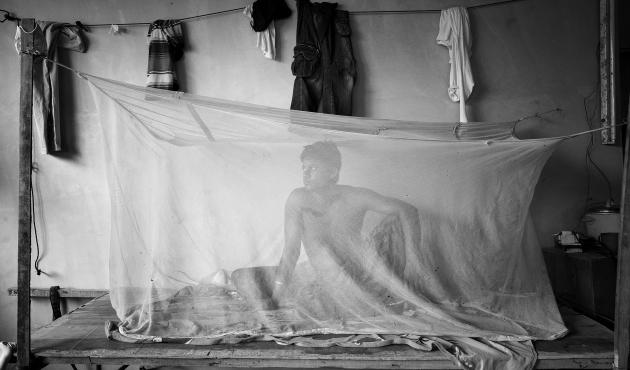 Bangladeshi labourers in Malaysia, photography by Nick Ng
Bangladeshi labourers in Malaysia, photography by Nick Ng
Sleeping in the shells of unfinished buildings, harassed by police and living hand to mouth. These intimate pictures show the lives of Bangladeshi labourers in Malaysia.
The pictures show some of the 40 labourers living and working on a partially built tower block in Kuala Lumpur. They were taken over a six month period by Nick Ng, the dentist and award winning photographer who used to pass by the project on his way to work.
The title of the collection- 3 Square Metres – refers to the space that each man was allocated to sleep at night.
 Bangladeshi labourers in Malaysia, photography by Nick Ng
Bangladeshi labourers in Malaysia, photography by Nick Ng
Most of the labourers come from a region close to Dhaka. Many of them know each other from their home towns and villages. Some are as young as seventeen, having lied about their age.
But all experience the typical hardships of those trapped in modern slavery. Deeply in debt through having to pay illegal –though ubiquitous - recruitment fees, they have surrendered their passports and work permits to labour agents and middle men.
Without access to their documents, the labourers are an easy target for police harassment and cannot move jobs. Their low wages – less than £8 a day – are often withheld because of disputes higher up the chain.
 Bangladeshi labourers in Malaysia, photography by Nick Ng
Bangladeshi labourers in Malaysia, photography by Nick Ng
Unable to leave the site easily, the workers are trapped in a relentless cycle of work and sleep. Many have been in Malaysia for more than five years, moving from project to project, without a home or a base.
Nick got to know labourers as the building was rising up last year. He sat with them in the evenings, sharing food and cigarettes. Gradually he documented their everyday lives: the austere comforts and unsafe conditions in which they were working. Despite the bleak surroundings, he found a strong sense of community.
“It was extremely tough,” he says, “But the men looked after each other. They were willing to take the risk because of the desperate need to send money back home.”
The project has now been completed and the migrants have moved on to other sites.
Recently there has been much talk about how legislation such as the UK Modern Slavery Act could help to protect the most vulnerable in supply chains. Indeed, over the next couple of decades, we could see multinationals taking a far more proactive approach to human rights, particularly on high profile projects.
But spare a thought for these migrants and the millions like them working for small developers and local businesses around the world. Under the corporate radar, unlikely to be detected by auditing or worker welfare schemes, they could remain invisible for generations to come.
• BRE’s Modern Slavery Act Symposium is running at the House of Commons, London on Thursday 10th November. There is a 20% discount for CIOB members. See www.msa4construction.com
•You can see more of Nick Ng’s photos, documenting the lives of forgotten communities in Asia at www.nickng.zenfolio.com



